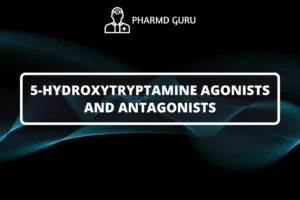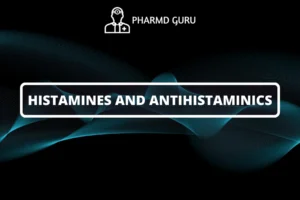The heart’s rhythm is crucial for its proper functioning. However, certain conditions can disrupt the normal electrical activity of the heart, leading to irregular heart rhythms known as arrhythmias. Anti-arrhythmic drugs play a vital role in managing these abnormal heart rhythms and restoring the heart’s regular rhythm. In this article, we will explore the pharmacology of anti-arrhythmic drugs, their mechanisms of action, different classes of drugs, and considerations in their usage.
SCROLL DOWN TO THE BOTTOM OF THIS PAGE FOR ACTUAL NOTES.
TABLE OF CONTENTS:
- Introduction
- Mechanism of Action
- Classes of Anti-arrhythmic Drugs
- Class I: Sodium Channel Blockers
- Class II: Beta Blockers
- Class III: Potassium Channel Blockers
- Class IV: Calcium Channel Blockers
- Other Anti-arrhythmic Agents
- Considerations in Usage
Introduction
Anti-arrhythmic drugs are medications used to manage abnormal heart rhythms or arrhythmias. These drugs help restore the heart’s regular rhythm by modulating the electrical signals within the heart and preventing or controlling arrhythmias. They are prescribed based on the type and severity of the arrhythmia, overall health of the patient, and potential drug interactions.
Mechanism of Action
Different classes of anti-arrhythmic drugs exert their effects through various mechanisms:
Class I: Sodium Channel Blockers
Class I anti-arrhythmic drugs, such as quinidine and lidocaine, work by blocking sodium channels in the heart’s cells. By inhibiting sodium influx, these drugs slow down the conduction of electrical impulses, helping to suppress abnormal rhythms.
Class II: Beta Blockers
Class II anti-arrhythmic drugs, such as metoprolol and propranolol, block the action of adrenaline (epinephrine) and noradrenaline (norepinephrine) on beta-adrenergic receptors. By doing so, beta blockers reduce the heart’s response to sympathetic stimulation, slowing down the heart rate and reducing the risk of arrhythmias.
Class III: Potassium Channel Blockers
Class III anti-arrhythmic drugs, such as amiodarone and sotalol, prolong the repolarization phase of the cardiac action potential by blocking potassium channels. This lengthens the time between heartbeats, stabilizes the electrical activity of the heart, and helps prevent certain types of arrhythmias.
Class IV: Calcium Channel Blockers
Class IV anti-arrhythmic drugs, such as verapamil and diltiazem, block calcium channels in the heart’s cells. By inhibiting calcium influx, these drugs slow down the conduction of electrical impulses and reduce the heart’s contractility, helping to control arrhythmias.
Other Anti-arrhythmic Agents
Apart from the four main classes, there are other anti-arrhythmic agents that work through different mechanisms. These include adenosine, which slows down the electrical conduction in the heart, and digoxin, which increases the force of heart contractions.
Classes of Anti-arrhythmic Drugs
The following classes of anti-arrhythmic drugs are commonly used:
- Class I: Sodium Channel Blockers
- Quinidine
- Lidocaine
- Flecainide
- Propafenone
- Class II: Beta Blockers
- Metoprolol
- Propranolol
- Atenolol
- Bisoprolol
- Class III: Potassium Channel Blockers
- Amiodarone
- Sotalol
- Dofetilide
- Ibutilide
- Class IV: Calcium Channel Blockers
- Verapamil
- Diltiazem
- Other Anti-arrhythmic Agents
- Adenosine
- Digoxin
Considerations in Usage
When using anti-arrhythmic drugs, certain factors should be taken into consideration:
- Individualized Treatment: Treatment plans should be tailored to the individual’s specific arrhythmia, medical history, and potential drug interactions.
- Monitoring and Dose Adjustments: Regular monitoring of the heart’s rhythm and periodic evaluation by healthcare professionals help determine the effectiveness of the medication. Dosage adjustments may be necessary to achieve optimal control of arrhythmias.
- Potential Side Effects: Anti-arrhythmic drugs may have side effects, such as dizziness, fatigue, low blood pressure, or heart rate changes. The specific side effects may vary depending on the class of medication and the individual’s response.
- Drug Interactions: Some anti-arrhythmic drugs can interact with other medications, including over-the-counter drugs and herbal supplements. It is important to inform healthcare professionals about all medications being taken to avoid potential interactions.
ACTUAL NOTES:




